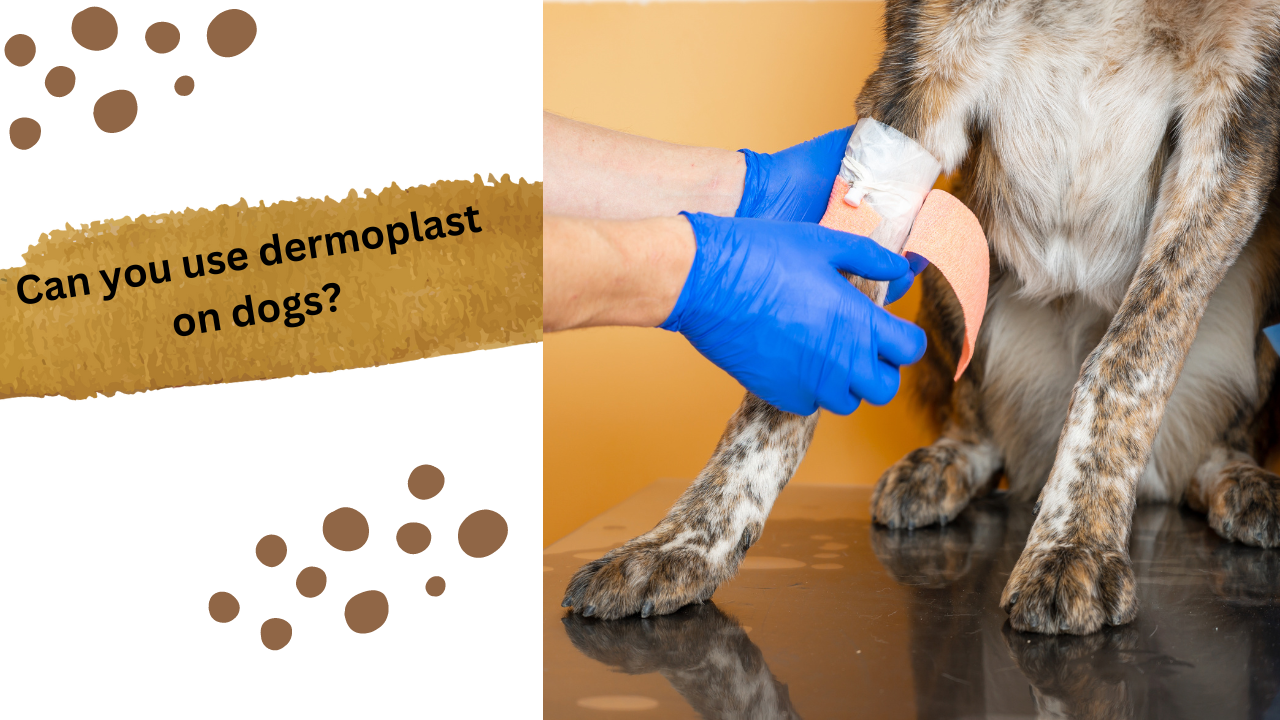Dermoplast, a common household first-aid spray, has been a trusted solution for alleviating pain and promoting the healing of minor skin irritations for humans. As a pet owner, it’s only natural to wonder whether Dermoplast is safe for our furry friends. In this article, we’ll delve into the intricacies of using Dermoplast on dogs, addressing concerns, highlighting safe practices, and providing a well-rounded perspective on this topic.
What is Dermoplast?
Overview of Dermoplast
Dermoplast is an over-the-counter spray or ointment that contains a combination of anesthetic and antiseptic properties. Primarily designed for human use, it is commonly used to relieve pain and prevent infection in minor wounds, cuts, and skin irritations.
Human Application
Humans often use Dermoplast for a range of issues, including postpartum discomfort, sunburns, and insect bites. Its popularity lies in its ability to provide relief without causing harm in typical usage scenarios.
Concerns About Using Dermoplast on Dogs
Skin Sensitivity in Dogs
Dogs have different skin sensitivity levels compared to humans. What may be harmless to us could potentially cause reactions in our canine companions, making it crucial to approach the use of Dermoplast with caution.
Potential Risks
Concerns revolve around the possibility of adverse reactions or ingestion risks when applying Dermoplast to a dog’s skin. The intention is to address these concerns and provide guidelines for safe use.
Safe Uses of Dermoplast on Dogs
Minor Wounds and Cuts
In certain situations, Dermoplast can be used on dogs for minor wounds and cuts. The key is to apply it sparingly and prevent the dog from licking the treated area, as ingestion could pose risks.
Insect Bites and Stings
Dermoplast may also offer relief for insect bites and stings on dogs. Its numbing effect can help soothe the affected area, but vigilance is essential to prevent any negative reactions.
Avoiding Harmful Practices
Avoiding Ingestion
Dogs are prone to licking treated areas, making it crucial to prevent ingestion. This involves applying Dermoplast in a way that minimizes the risk of the dog licking the sprayed or applied area.
Do Read: Are Praying Mantises Dangerous to Dogs? Unveiling the Truth
Consulting a Veterinarian
Before using Dermoplast on a dog, especially for specific skin issues, consulting a veterinarian is strongly advised. Professional advice ensures that the product is suitable for the individual dog’s needs.
Alternative Solutions for Canine Skin Care
Dog-Safe Ointments
Several ointments are formulated specifically for canine skin care. These products are designed to address skin issues without posing risks to dogs.
Natural Remedies
Exploring natural remedies for minor skin irritations, such as aloe vera or coconut oil, provides alternatives that are generally safe for dogs.
Real-Life Experiences
Testimonials
Positive experiences from dog owners who have safely used Dermoplast can provide insights into its potential benefits.
Cautionary Tales
Understanding any cautionary tales or negative experiences with Dermoplast on dogs helps paint a comprehensive picture of potential risks.
Consulting a Veterinarian
Individual Variations
Each dog is unique, and their reactions to substances can vary. Veterinarians can provide personalized advice based on a dog’s health, breed, and any pre-existing conditions.
Professional Advice
When in doubt or faced with specific skin issues in dogs, seeking professional veterinary advice is the best course of action.
Conclusion
In the delicate balance of using Dermoplast on dogs, the key lies in responsible pet ownership. While Dermoplast can offer relief for certain minor issues, it should be approached cautiously. Responsible use involves understanding the specific needs of individual dogs, seeking professional advice when necessary, and prioritizing the safety and well-being of our beloved pets.


